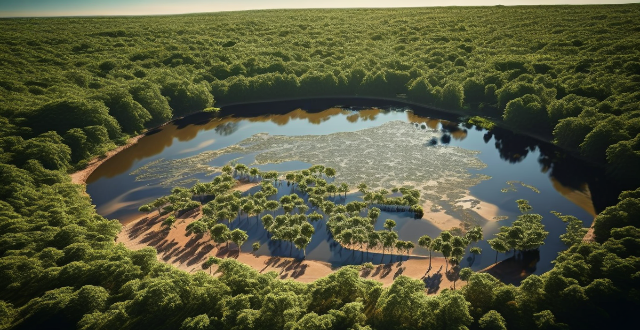Societies worldwide face challenges due to changing climate conditions, including rising temperatures and extreme weather events. To adapt, they must build resilience through infrastructure improvements, sustainable agriculture, ecosystem preservation, and community-based measures. Mitigating emissions by switching to renewable energy sources and promoting low-carbon transportation is also crucial. Research and innovation in climate modeling, sustainable technologies, social science, and data analysis are essential for effective adaptation. Collaboration and partnerships through international agreements, research collaborations, knowledge sharing, and financial support are vital for collective action. By adopting these strategies, societies can create a more sustainable future.

Adapting to Changing Climate Conditions
Societies around the world are facing the challenges brought on by changing climate conditions. The effects of global warming, such as rising temperatures, sea-level rise, and extreme weather events, are becoming increasingly evident. To cope with these changes, societies must adapt in various ways. In this article, we will explore how societies can adapt to changing climate conditions.
1. Building Resilience
One of the key strategies for adapting to changing climate conditions is building resilience. This involves creating systems that can withstand and recover from the impacts of climate change. Some ways to build resilience include:
- Infrastructure: Investing in infrastructure that can withstand extreme weather events, such as floods, hurricanes, and droughts.
- Agriculture: Developing sustainable farming practices that can cope with changing weather patterns and soil conditions.
- Ecosystems: Preserving and restoring natural ecosystems that provide essential services, such as clean water, pollination, and carbon sequestration.
- Communities: Encouraging community-based adaptation measures, such as early warning systems, emergency response plans, and public education campaigns.
2. Mitigating Emissions
While adaptation is crucial for coping with the impacts of climate change, it is also important to address the root cause of the problem: greenhouse gas emissions. By reducing our carbon footprint, we can slow down the rate of climate change and buy more time for adaptation efforts. Some ways to mitigate emissions include:
- Energy: Switching to renewable energy sources, such as solar, wind, and hydro power, and improving energy efficiency in buildings and transportation.
- Transportation: Promoting low-carbon modes of transportation, such as walking, cycling, and public transit, and investing in electric vehicles and charging infrastructure.
- Waste Management: Reducing waste generation, promoting recycling and composting, and developing sustainable waste disposal methods.
- Forestry: Planting trees and protecting existing forests to absorb carbon dioxide from the atmosphere.
3. Research and Innovation
To effectively adapt to changing climate conditions, societies must invest in research and innovation. This includes developing new technologies, improving our understanding of climate processes, and finding innovative solutions to climate-related challenges. Some areas of focus for research and innovation include:
- Climate Modeling: Developing more accurate models to predict future climate scenarios and their potential impacts on human societies and natural ecosystems.
- Sustainable Technologies: Inventing new technologies that can help reduce greenhouse gas emissions, improve resource efficiency, or enhance ecological restoration efforts.
- Social Science Research: Studying the social, economic, and political factors that influence climate change adaptation and mitigation strategies, and identifying barriers to effective action.
- Data Collection and Analysis: Gathering data on climate trends, impacts, and adaptation measures to inform decision-making and evaluate progress over time.
4. Collaboration and Partnerships
Adapting to changing climate conditions is a complex task that requires collaboration across different sectors, regions, and countries. By working together, societies can share knowledge, resources, and best practices to develop more effective adaptation strategies. Some examples of collaboration and partnerships include:
- International Agreements: Signing onto international agreements, such as the Paris Agreement, which aim to limit global warming through collective action on climate change mitigation and adaptation.
- Research Collaborations: Participating in joint research projects with other countries or institutions to advance scientific understanding of climate change and its impacts.
- Knowledge Sharing: Sharing information about successful adaptation strategies through conferences, workshops, and online platforms to help others learn from experiences and avoid repeating mistakes.
- Financial Support: Providing financial assistance to developing countries or vulnerable communities to support their adaptation efforts and build capacity for climate resilience.
In conclusion, adapting to changing climate conditions requires a multifaceted approach that involves building resilience, mitigating emissions, investing in research and innovation, and collaborating with others. By taking these steps, societies can better cope with the challenges posed by climate change and create a more sustainable future for all.